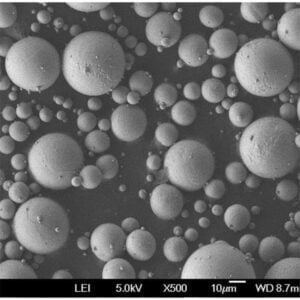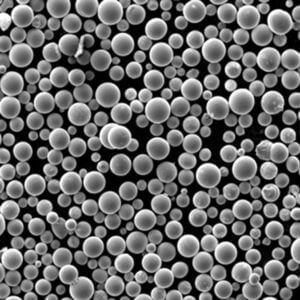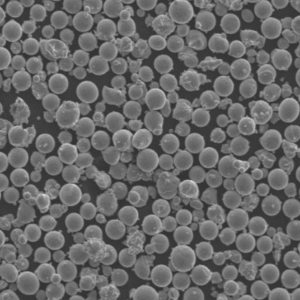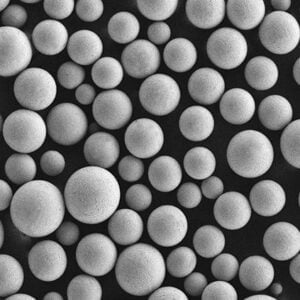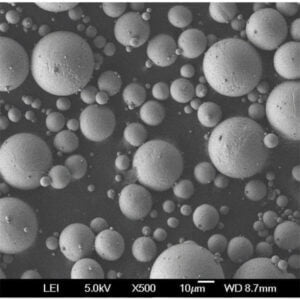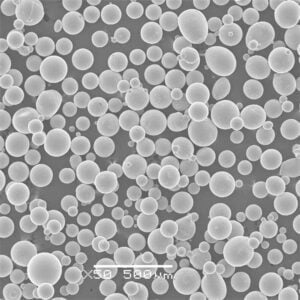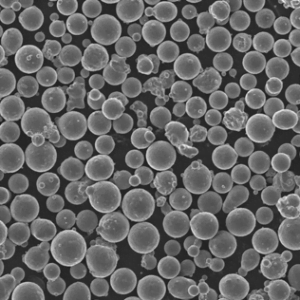Plasma-Rotations-Elektroden-Verfahren
Inhaltsübersicht
Stellen Sie sich ein Ballett vor, bei dem ein Metallstab blitzschnell eine Pirouette dreht und in einem schillernden Schauspiel auf einen glühend heißen Plasmabogen trifft. Das geschmolzene Metall, das durch die Zentrifugalkraft nach außen geschleudert wird, kühlt ab und erstarrt zu winzigen, nahezu perfekten Kugeln. Dieser fesselnde Tanz ist die Essenz der Plasma-Rotations-Elektroden-Verfahren (PREP), eine revolutionäre Technologie zur Herstellung von Hochleistungsmetallpulvern.
Verfahrensprinzip des Plasma-Rotations-Elektroden-Verfahrens
PREP funktioniert wie eine gut orchestrierte Sinfonie. Hier ist eine Aufschlüsselung der wichtigsten Sätze:
- Die Bühne: Eine abgedichtete Kammer, die mit einem Inertgas wie Argon oder Helium gefüllt ist, sorgt für minimale Kontamination.
- Der Stern: Ein Stab aus dem gewünschten Metall, die Elektrode, steht im Mittelpunkt.
- Das Rampenlicht: Ein Plasmabrenner zündet und erzeugt einen intensiv heißen, ionisierten Gasstrahl.
- Das Grand Jeté: Die Elektrode ist auf einer Hochgeschwindigkeitsspindel montiert, die sich mit Tausenden von Umdrehungen pro Minute dreht. Dadurch entsteht eine starke Zentrifugalkraft.
- Die geschmolzene Umarmung: Der Plasmalichtbogen schmilzt die Spitze der rotierenden Elektrode.
- Der große Sprung: Die Zentrifugalkraft schleudert das geschmolzene Metall in winzigen Tröpfchen nach außen.
- Der kühlende Cotillion: Die schnell fliegenden Tröpfchen kühlen in der Inertgasatmosphäre rasch ab.
- Der Vorhang ist gefallen: Die erstarrten Metallkugeln, die nun perfekte Metallpulver sind, werden zur weiteren Verarbeitung gesammelt.
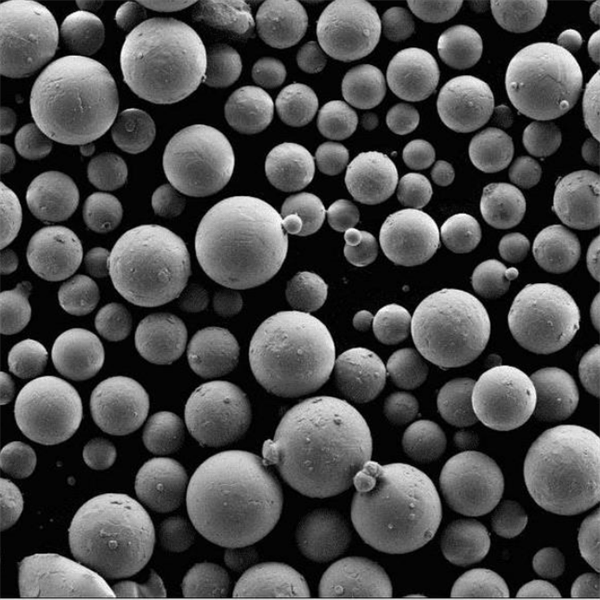
Prozessmerkmale des Plasma-Rotations-Elektroden-Verfahrens
| Prozessmerkmale | Beschreibung | Vorteile | Überlegungen |
|---|---|---|---|
| Morphologie des kugelförmigen Pulvers | PREP zeichnet sich durch die Herstellung nahezu perfekter Kugeln aus, was auf das Zusammenspiel von Zentrifugalkraft und schneller Erstarrung zurückzuführen ist. Wenn die geschmolzenen Metalltröpfchen von der rotierenden Elektrode nach außen geschleudert werden, werden sie durch die Oberflächenspannung in enge Kugeln gezogen. Durch die rasche Abkühlung wird die Kugelform weiter verfestigt und die Bildung von unregelmäßigen Formen oder Satelliten (kleinere Partikel, die an größeren hängen) verhindert. | * Außergewöhnliche Fließfähigkeit: Sphärische Pulver fließen frei und minimieren Reibung und Blockaden bei AM-Prozessen wie dem 3D-Druck. Dieser reibungslose Fluss sorgt für eine gleichmäßige Materialabscheidung und hochwertige Endprodukte. * Hohe Packungsdichte: Sphärische Partikel packen sich effizient zusammen und maximieren so die Menge des Pulvers, die in eine Baukammer geladen werden kann. Dies führt zu einer besseren Materialausnutzung und potenziell kürzeren Druckzeiten. * Verbesserte Laserabsorption: Bei laserbasierten AM-Verfahren fördert die Kugelform eine gleichmäßige Laserabsorption über das gesamte Pulverpartikel. Dies führt zu einem gleichmäßigen Schmelzverhalten und minimiert das Risiko ungeschmolzener Bereiche oder Defekte innerhalb des gedruckten Teils. | Während mit anderen Zerstäubungsmethoden ein gewisser Grad an Sphärizität erreicht werden kann, liefert PREP durchgängig einen höheren Anteil an perfekt kugelförmigen Partikeln. Diese überlegene Morphologie ist besonders wichtig für anspruchsvolle AM-Anwendungen, bei denen eine präzise Steuerung und gleichbleibende Materialeigenschaften unerlässlich sind. |
| Minimale Verunreinigungen | Die kontrollierte Umgebung der PREP minimiert die Verunreinigung der Metallpulver. Die Verwendung eines Inertgases wie Argon oder Helium während des Prozesses verhindert Oxidation und reduziert die Wechselwirkung zwischen dem geschmolzenen Metall und der umgebenden Atmosphäre. Außerdem können die hohen Temperaturen des Plasmalichtbogens dazu beitragen, flüchtige Verunreinigungen im Ausgangsmaterial zu verdampfen. | * Verbesserte mechanische Eigenschaften: Reine Metallpulver führen zu besseren mechanischen Eigenschaften des Endprodukts. Ein geringerer Anteil an Oxiden und anderen Verunreinigungen gewährleistet, dass die Festigkeit, Duktilität und Ermüdungsbeständigkeit des Materials nicht beeinträchtigt wird. * Überlegene Korrosionsbeständigkeit: Geringere Verunreinigungen führen oft zu einer besseren Korrosionsbeständigkeit des Endprodukts. Dies ist besonders wichtig für Anwendungen, bei denen die Metallteile rauen Umgebungen ausgesetzt sind. | Eine strenge Kontrolle der Inertgasatmosphäre und die Wartung des Plasmabrenners sind entscheidend für die Reinheit der hergestellten Pulver. Jegliche Leckagen oder Verunreinigungen in der Kammer können unerwünschte Elemente einbringen und sich möglicherweise auf die Eigenschaften des Endprodukts auswirken. |
| Material Vielseitigkeit | PREP verfügt über eine bemerkenswerte Fähigkeit, eine breite Palette von Metallen zu verarbeiten, von gängigen Elementen wie Titan und Aluminium bis hin zu reaktiven Metallen wie Tantal und Zirkonium. Diese Vielseitigkeit ergibt sich aus der sorgfältig kontrollierten Plasmaumgebung, die an die spezifischen Schmelzeigenschaften der verschiedenen Metalle angepasst werden kann. | * Breites Anwendungspotenzial: Die Fähigkeit, hochwertige Pulver aus verschiedenen Materialien herzustellen, öffnet die Türen für innovative Anwendungen in verschiedenen Branchen. Von Bauteilen für die Luft- und Raumfahrt, die leichte und hochfeste Legierungen erfordern, bis hin zu biomedizinischen Implantaten, die biokompatible Materialien wie CoCr benötigen, deckt PREP ein breites Spektrum an Bedürfnissen ab. * Erforschung fortgeschrittener Materialien: Die Fähigkeit von PREP, reaktive Metalle zu verarbeiten, ebnet den Weg für die Erforschung neuartiger Materialien mit einzigartigen Eigenschaften. Diese Materialien können möglicherweise Bereiche wie die Luft- und Raumfahrt und den Energiesektor revolutionieren, wo Hochtemperaturleistung und Korrosionsbeständigkeit von größter Bedeutung sind. | Nicht alle Metalle verhalten sich unter der starken Hitze und den Zentrifugalkräften der PREP gleich. Einige Materialien erfordern möglicherweise spezielle Prozessparameter oder sogar eine Vorbehandlung, um eine erfolgreiche Pulverbildung zu gewährleisten. |
| Feine Kontrolle über die Pulvereigenschaften | Ein entscheidender Vorteil von PREP liegt in der Möglichkeit, die Größe und Morphologie der erzeugten Pulver genau zu steuern. Durch die Manipulation von Parametern wie Rotationsgeschwindigkeit, Leistung des Plasmalichtbogens und Kühlbedingungen können die Hersteller die Pulvereigenschaften auf die spezifischen Anwendungsanforderungen abstimmen. So können beispielsweise feinere Pulver für komplizierte 3D-Druckaufträge bevorzugt werden, während größere Pulver ideal für Anwendungen wie das thermische Spritzen sind. | * Maßgeschneiderte Pulver für spezifische Bedürfnisse: Die Möglichkeit der Feinabstimmung der Pulvereigenschaften erlaubt es den Herstellern, das Material für die vorgesehene Anwendung zu optimieren. Dieses Maß an Kontrolle gewährleistet, dass das Endprodukt die gewünschten mechanischen Eigenschaften, die Oberflächenbeschaffenheit und die allgemeine Funktionalität aufweist. * Reduzierter Nachbearbeitungsbedarf: Eine präzise Kontrolle der Pulvergrößenverteilung kann den Bedarf an umfangreichen Nachbearbeitungsschritten wie Sieben oder Klassieren minimieren. Dies führt zu einer höheren Produktionseffizienz und potenziell niedrigeren Gesamtkosten. | Um das gewünschte Maß an Kontrolle zu erreichen, ist ein tiefes Verständnis des Zusammenspiels zwischen den Prozessparametern und den resultierenden Pulvereigenschaften erforderlich. Fachwissen und eine kontinuierliche Prozessoptimierung sind entscheidend für die konstante Herstellung von Pulvern, die den genauen Spezifikationen entsprechen. |
Mit dem Plasma-Rotations-Elektroden-Verfahren hergestellte Metallpulver
PREP erschließt einen Schatz an Hochleistungsmetallpulvern, von denen jedes seine eigenen Eigenschaften und Anwendungen hat. Hier ist ein Blick auf zehn bemerkenswerte Beispiele:
1. Titan-Pulver (CP Ti): CP-Ti-Pulver sind das Arbeitspferd der AM-Industrie und werden wegen ihres guten Verhältnisses von Festigkeit zu Gewicht, ihrer hervorragenden Korrosionsbeständigkeit und ihrer Biokompatibilität geschätzt. Sie werden in Komponenten für die Luft- und Raumfahrt, in medizinischen Implantaten und in Sportartikeln verwendet.
2. Pulver aus Titanlegierungen (Ti6Al4V): Ti6Al4V-Pulver bieten eine noch höhere Festigkeit und Ermüdungsbeständigkeit als CP Ti und sind ideal für anspruchsvolle Anwendungen wie Triebwerkskomponenten, Prothesen und Zahnimplantate.
3. Aluminium-Pulver (AA2024): AA2024-Pulver sind eine beliebte Wahl für leichte und stabile Anwendungen und werden in Komponenten für die Luft- und Raumfahrt, in Automobilteilen und in Sportartikeln eingesetzt.
4. Aluminiumlegierungspulver (AlSi10Mg): AlSi10Mg-Pulver kombinieren die Vorteile von Aluminium mit einer verbesserten Gießbarkeit und eignen sich daher gut für Automobilkolben, Zylinderköpfe und Elektronikgehäuse.
5. Nickel-Pulver: Nickelpulver ist bekannt für seine Hochtemperaturfestigkeit und Korrosionsbeständigkeit und wird in Gasturbinenkomponenten, chemischen Verarbeitungsanlagen und in der Elektronik eingesetzt.
6. Pulver aus Nickellegierungen (Inconel 625): Inconel 625-Pulver sind in rauen Umgebungen außerordentlich leistungsfähig und werden in Triebwerkskomponenten, Wärmetauschern und Kernreaktoren eingesetzt.
7. Kobalt-Chrom-Pulver (CoCr): Biokompatibel und verschleißfest, sind CoCr-Pulver das bevorzugte Material für Hüft- und Knieprothesen, Zahnimplantate und chirurgische Instrumente.
8. Pulver aus rostfreiem Stahl (316L): 316L-Pulver bieten eine überzeugende Kombination aus Korrosionsbeständigkeit und Festigkeit und werden in medizinischen Geräten, chemischen Verarbeitungsanlagen und Schiffsanwendungen eingesetzt.
9. Kupferpulver: Kupferpulver ist ein hochleitfähiges und wärmeleitendes Metall und wird in elektrischen Komponenten, Kühlkörpern und elektromagnetischen Anwendungen eingesetzt.
10. Wolfram-Pulver: Aufgrund seiner außergewöhnlichen Hochtemperaturfestigkeit und Dichte ist Wolframpulver für Düsen von Raketentriebwerken, Panzerungen und Schweißelektroden unverzichtbar.
Anwendungen von Pulvern für das Plasma-Rotations-Elektroden-Verfahren
| Anwendungen | Beschreibung | Die wichtigsten Vorteile der PREP-Pulver | Mögliche zu berücksichtigende Beschränkungen |
|---|---|---|---|
| Additive Fertigungstechniken (AM) | PREP-Pulver glänzen in der Welt des AM, insbesondere bei 3D-Druckverfahren wie Laserschmelzen und Elektronenstrahlschmelzen. Ihre nahezu perfekte sphärische Morphologie, hervorragende Fließfähigkeit und minimale Verunreinigungen machen sie ideal für die Herstellung hochwertiger, komplexer Metallteile. | * Reibungslose Druckvorgänge: Die kugelförmige Form und die frei fließende Beschaffenheit der PREP-Pulver minimieren die Reibung und gewährleisten einen gleichmäßigen Materialauftrag während des Drucks. Dies führt zu einem reibungslosen Betrieb, einem geringeren Risiko von Verstopfungen und einem hochpräzisen Druck komplizierter Geometrien. * Hervorragende mechanische Eigenschaften: Der hohe Reinheitsgrad der PREP-Pulver führt zu hervorragenden mechanischen Eigenschaften des gedruckten Endprodukts. Die minimalen Verunreinigungen gewährleisten, dass die Festigkeit, Duktilität und Ermüdungsbeständigkeit des Materials nicht beeinträchtigt werden. * Breite Materialkompatibilität: Die Fähigkeit von PREP, eine breite Palette von Metallen zu verarbeiten, ermöglicht die Herstellung von 3D-Druckteilen aus verschiedenen Materialien. Dies öffnet Türen für Anwendungen, die besondere Eigenschaften erfordern, wie leichte und hochfeste Titanlegierungen für Komponenten in der Luft- und Raumfahrt oder biokompatibles CoCr für medizinische Implantate. | Während PREP-Pulver erhebliche Vorteile bieten, ist die Technologie selbst möglicherweise nicht für alle AM-Anwender ohne weiteres zugänglich. Die Anfangsinvestitionen in Spezialausrüstung und Fachwissen können für kleinere Betriebe ein Hindernis darstellen. |
| Luft- und Raumfahrtindustrie | Das unablässige Streben nach leichten und hochfesten Werkstoffen in der Luft- und Raumfahrtindustrie macht PREP-Pulver zu einer natürlichen Ergänzung. Die von PREP hergestellten Titan- und Aluminiumlegierungen werden in großem Umfang für Flugzeugstrukturen, Triebwerkskomponenten und Raumfahrzeugteile verwendet. | * Gewichtsreduzierung und Effizienz: Das hohe Verhältnis von Festigkeit zu Gewicht von PREP-Legierungen wie Ti6Al4V ermöglicht eine erhebliche Gewichtsreduzierung bei Flugzeugkomponenten. Dies führt zu einer verbesserten Treibstoffeffizienz und einer höheren Nutzlastkapazität. * Außergewöhnliche Leistung: PREP-Pulver ermöglichen die Herstellung von Bauteilen für die Luft- und Raumfahrt mit hervorragenden mechanischen Eigenschaften, die auch anspruchsvollen Betriebsbedingungen standhalten können. Ihre Hochtemperaturleistung und Ermüdungsbeständigkeit gewährleisten einen zuverlässigen und sicheren Betrieb von Flugzeugen. | Die Kosten für PREP-Pulver können im Vergleich zu anderen Methoden der Metallpulverherstellung ein Faktor sein. Die Vorteile der Gewichtsreduzierung und der überlegenen Leistung überwiegen jedoch auf lange Sicht oft die anfänglichen Kosten. |
| Biomedizinische Industrie | Biokompatibilität und Korrosionsbeständigkeit sind für erfolgreiche medizinische Implantate von größter Bedeutung. Die von PREP hergestellten Pulver wie CoCr und Titan bieten ein perfektes Gleichgewicht dieser Eigenschaften und sind daher ideal für Hüft- und Knieprothesen, Zahnimplantate und chirurgische Instrumente. Darüber hinaus ermöglicht die Möglichkeit, die Morphologie des Pulvers zu kontrollieren, die Schaffung poröser Strukturen, die das Einwachsen des Knochens fördern, was zu einer besseren Fixierung des Implantats führt. | * Verbesserte Biokompatibilität: Die minimalen Verunreinigungen in PREP-Pulvern minimieren das Risiko unerwünschter Gewebereaktionen, so dass sie für die Implantation im menschlichen Körper geeignet sind. * Verbesserte Osseointegration: Die kontrollierte Porosität einiger PREP-Pulver fördert das Knochenwachstum an der Implantatoberfläche, was zu einer stärkeren Fixierung und einer längeren Lebensdauer der Implantate führt. * Korrosionsbeständigkeit für dauerhafte Leistung: PREP-Pulver führen häufig zu Implantaten mit hervorragender Korrosionsbeständigkeit, die ihre Funktionalität und Unversehrtheit über einen langen Zeitraum hinweg gewährleisten. | Die strengen gesetzlichen Anforderungen in der Medizinprodukteindustrie erfordern strenge Qualitätskontrollmaßnahmen während des gesamten Produktionsprozesses, einschließlich der Metallpulver selbst. Hersteller, die PREP-Pulver verwenden, müssen sicherstellen, dass sie alle relevanten Normen für medizinische Produkte erfüllen. |
| Elektronikindustrie | Die Anforderungen der modernen Elektronik an Miniaturisierung und Leistungsfähigkeit werden von PREP-Pulvern bestens erfüllt. Kupfer- und Nickelpulver, die für ihre hervorragende Leitfähigkeit bekannt sind, werden in elektrischen Komponenten, Kühlkörpern und elektronischen Gehäusen verwendet. Der hohe Reinheitsgrad und die kontrollierte Größenverteilung dieser Pulver gewährleisten eine konstante Leistung und einen zuverlässigen Betrieb der Geräte. | * Außergewöhnliche Leitfähigkeit: Die nahezu perfekte sphärische Form und die minimalen Verunreinigungen in den von PREP hergestellten Kupfer- und Nickelpulvern minimieren den elektrischen Widerstand, was zu einem effizienten Stromfluss in elektronischen Komponenten führt. * Präzise Steuerung für die Miniaturisierung: Die Möglichkeit, die Größe und Morphologie des Pulvers zu kontrollieren, ermöglicht die Herstellung hochleitfähiger Strukturen auf mikroskopischer Ebene, was für miniaturisierte elektronische Geräte entscheidend ist. * Zuverlässige Leistung: Der hohe Reinheitsgrad und die gleichbleibende Qualität der PREP-Pulver gewährleisten die vorhersehbare und zuverlässige Leistung elektronischer Bauteile. | Obwohl PREP-Pulver eine überragende Leistung bieten, können alternative Methoden wie die galvanische Abscheidung für einige hochvolumige Elektronikanwendungen kostengünstiger sein. Für High-End-Geräte, die die bestmögliche Leitfähigkeit und Zuverlässigkeit erfordern, sind PREP-Pulver jedoch nach wie vor die erste Wahl. |
Vergleich des Plasma-Rotations-Elektroden-Verfahrens mit anderen Verfahren zur Herstellung von Metallpulvern
PREP ist nicht der einzige Akteur auf dem Gebiet der Metallpulverherstellung. Hier eine Übersicht über den Vergleich mit anderen gängigen Verfahren:
| Merkmal | Plasma-Rotations-Elektroden-Verfahren (PREP) | Gaszerstäubung (GA) | Wasserzerstäubung (WA) |
|---|---|---|---|
| Morphologie des Pulvers | Sphären | Unregelmäßige Formen, Satelliten | Unregelmäßige Formen |
| Fließfähigkeit | Ausgezeichnet | Gut | Schlecht |
| Packungsdichte | Hoch | Gut | Mäßig |
| Reinheit | Hoch (Inertgasumgebung) | Hoch | Niedriger (Oxidationspotenzial) |
| Material Vielseitigkeit | Breite Palette von Metallen | Breite Palette von Metallen | Begrenzt auf einige Metalle |
| Prozesskontrolle | Hoch | Mäßig | Mäßig |
| Kosten | Höher | Mäßig | Unter |
Vorteile und Grenzen des Plasma-Rotations-Elektroden-Verfahrens
| Vorteile und Beschränkungen | Beschreibung | Vorteile | Beschränkungen |
|---|---|---|---|
| Morphologie des Pulvers | PREP zeichnet sich durch die Herstellung nahezu perfekter kugelförmiger Metallpulver aus. Dies ist auf die kombinierte Wirkung von Zentrifugalkraft und schneller Erstarrung zurückzuführen. Geschmolzene Metalltröpfchen werden von der rotierenden Elektrode nach außen geschleudert und durch die Oberflächenspannung in enge Kugeln gezogen. Durch die rasche Abkühlung wird diese Kugelform weiter verfestigt, wodurch die Bildung von unregelmäßigen Partikeln oder Satelliten (kleinere Partikel, die an größeren hängen) minimiert wird. | * Außergewöhnliche Fließfähigkeit: Sphärische Pulver fließen frei und mit minimaler Reibung, was das Risiko von Verstopfungen bei additiven Fertigungsverfahren (AM) wie dem 3D-Druck verringert. Dieser reibungslose Fluss gewährleistet einen gleichmäßigen Materialauftrag und trägt zu hochwertigen Endprodukten bei. * Hohe Packungsdichte: Sphärische Partikel packen sich effizient zusammen und maximieren so die Menge des Pulvers, die in eine Baukammer geladen werden kann. Dies führt zu einer besseren Materialausnutzung und potenziell kürzeren Druckzeiten. * Verbesserte Laserabsorption in AM: Bei laserbasierten AM-Verfahren fördert die Kugelform eine gleichmäßige Laserabsorption über das gesamte Pulverpartikel. Dies führt zu einem gleichmäßigen Schmelzverhalten und minimiert das Risiko ungeschmolzener Bereiche oder Defekte innerhalb des gedruckten Teils. | Während mit anderen Zerstäubungsmethoden ein gewisser Grad an Sphärizität erreicht werden kann, liefert PREP durchgängig einen höheren Anteil an perfekt kugelförmigen Partikeln. Diese überlegene Morphologie ist besonders wichtig für anspruchsvolle AM-Anwendungen, bei denen eine präzise Steuerung und gleichbleibende Materialeigenschaften unerlässlich sind. |
| Reinheit | Die kontrollierte Umgebung von PREP minimiert die Verunreinigung der Metallpulver. Bei dem Verfahren wird ein Inertgas wie Argon oder Helium verwendet, um Oxidation zu verhindern und die Wechselwirkung zwischen dem geschmolzenen Metall und der umgebenden Atmosphäre zu verringern. Außerdem können die hohen Temperaturen des Plasmalichtbogens dazu beitragen, flüchtige Verunreinigungen im Ausgangsmaterial zu verdampfen. | * Verbesserte mechanische Eigenschaften: Reine Metallpulver führen zu besseren mechanischen Eigenschaften des Endprodukts. Ein geringerer Anteil an Oxiden und anderen Verunreinigungen gewährleistet, dass die Festigkeit, Duktilität und Ermüdungsbeständigkeit des Materials nicht beeinträchtigt wird. * Überlegene Korrosionsbeständigkeit: Geringere Verunreinigungen führen oft zu einer besseren Korrosionsbeständigkeit des Endprodukts. Dies ist besonders wichtig für Anwendungen, bei denen die Metallteile rauen Umgebungen ausgesetzt sind. | Eine strenge Kontrolle der Inertgasatmosphäre und die Wartung des Plasmabrenners sind entscheidend für die Reinheit der hergestellten Pulver. Jegliche Leckagen oder Verunreinigungen in der Kammer können unerwünschte Elemente einbringen und sich möglicherweise auf die Eigenschaften des Endprodukts auswirken. |
| Material Vielseitigkeit | PREP verfügt über eine bemerkenswerte Fähigkeit, eine breite Palette von Metallen zu verarbeiten, von gängigen Elementen wie Titan und Aluminium bis hin zu reaktiven Metallen wie Tantal und Zirkonium. Diese Vielseitigkeit ergibt sich aus der sorgfältig kontrollierten Plasmaumgebung, die an die spezifischen Schmelzeigenschaften der verschiedenen Metalle angepasst werden kann. | * Breites Anwendungspotenzial: Die Fähigkeit, hochwertige Pulver aus verschiedenen Materialien herzustellen, öffnet die Türen für innovative Anwendungen in verschiedenen Branchen. Von Bauteilen für die Luft- und Raumfahrt, die leichte und hochfeste Legierungen erfordern, bis hin zu biomedizinischen Implantaten, die biokompatible Materialien wie CoCr benötigen, deckt PREP ein breites Spektrum an Bedürfnissen ab. * Erforschung fortgeschrittener Materialien: Die Fähigkeit von PREP, reaktive Metalle zu verarbeiten, ebnet den Weg für die Erforschung neuartiger Materialien mit einzigartigen Eigenschaften. Diese Materialien können möglicherweise Bereiche wie die Luft- und Raumfahrt und den Energiesektor revolutionieren, wo Hochtemperaturleistung und Korrosionsbeständigkeit von größter Bedeutung sind. | Nicht alle Metalle verhalten sich unter der starken Hitze und den Zentrifugalkräften der PREP gleich. Einige Materialien erfordern möglicherweise spezielle Prozessparameter oder sogar eine Vorbehandlung, um eine erfolgreiche Pulverbildung zu gewährleisten. |
| Prozesskontrolle | Ein entscheidender Vorteil von PREP liegt in der Möglichkeit, die Größe und Morphologie der erzeugten Pulver genau zu steuern. Durch die Manipulation von Parametern wie Rotationsgeschwindigkeit, Leistung des Plasmalichtbogens und Kühlbedingungen können die Hersteller die Pulvereigenschaften auf die spezifischen Anwendungsanforderungen abstimmen. So können beispielsweise feinere Pulver für komplizierte 3D-Druckaufträge bevorzugt werden, während größere Pulver ideal für Anwendungen wie das thermische Spritzen sind. | * Maßgeschneiderte Pulver für spezifische Bedürfnisse: Die Möglichkeit der Feinabstimmung der Pulvereigenschaften erlaubt es den Herstellern, das Material für die vorgesehene Anwendung zu optimieren. Dieses Maß an Kontrolle gewährleistet, dass das Endprodukt die gewünschten mechanischen Eigenschaften, die Oberflächenbeschaffenheit und die allgemeine Funktionalität aufweist. * Reduzierter Nachbearbeitungsbedarf: Eine präzise Kontrolle der Pulvergrößenverteilung kann den Bedarf an umfangreichen Nachbearbeitungsschritten wie Sieben oder Klassieren minimieren. Dies führt zu einer höheren Produktionseffizienz und potenziell niedrigeren Gesamtkosten. | Um das gewünschte Maß an Kontrolle zu erreichen, ist ein tiefes Verständnis des Zusammenspiels zwischen den Prozessparametern und den resultierenden Pulvereigenschaften erforderlich. Fachwissen und eine kontinuierliche Prozessoptimierung sind entscheidend für die konstante Herstellung von Pulvern, die den genauen Spezifikationen entsprechen. |
| Kosten | PREP kann ein teureres Verfahren zur Herstellung von Metallpulvern sein als einige Alternativen wie die Wasserzerstäubung. Die Technologie erfordert spezielle Ausrüstung und Fachwissen, wodurch sie für kleinere Hersteller weniger zugänglich ist. | * Leistungsstarke Pulver für anspruchsvolle Anwendungen: Auch wenn die anfänglichen Kosten höher sein mögen, bieten PREP-Pulver eine bessere Qualität und Leistung, was oft zu besseren Ergebnissen im Endprodukt führt. Dies kann die höheren Kosten rechtfertigen, insbesondere bei kritischen Anwendungen. | Der Kostenfaktor kann für einige Nutzer eine große Hürde darstellen, insbesondere in Branchen |
Die Wahl des richtigen Verfahrens zur Herstellung von Metallpulvern
| Die Wahl des richtigen Verfahrens zur Herstellung von Metallpulvern | Überlegungen | Plasma-Rotations-Elektroden-Verfahren (PREP) | Gaszerstäubung (GA) | Wasserzerstäubung (WA) |
|---|---|---|---|---|
| Anforderungen an die Bewerbung | Der Verwendungszweck des Metallpulvers spielt eine entscheidende Rolle bei der Auswahl des am besten geeigneten Herstellungsverfahrens. Faktoren wie die gewünschten Eigenschaften des Endprodukts, Maßtoleranzen und Oberflächenbeschaffenheit sollten sorgfältig berücksichtigt werden. | * Überlegene Pulvermorphologie: PREP zeichnet sich durch die Herstellung nahezu perfekter Kugeln aus, die sich ideal für AM-Prozesse eignen, die eine reibungslose Fließfähigkeit und eine gleichmäßige Materialabscheidung erfordern. * Hohe Reinheit: Die kontrollierte Umgebung von PREP minimiert die Verunreinigung, was zu Pulvern mit hervorragenden mechanischen Eigenschaften und Korrosionsbeständigkeit führt. * Vielseitigkeit der Materialien: PREP verarbeitet eine breite Palette von Metallen, die sich für Anwendungen eignen, die spezielle Materialien erfordern, wie biokompatibles CoCr für Implantate oder hochfeste Titanlegierungen für Bauteile in der Luft- und Raumfahrt. | * Gute Morphologie des Pulvers: GA produziert Pulver mit einer im Allgemeinen sphärischen Form, die sich für verschiedene AM- und andere Anwendungen eignet. * Breite Materialkompatibilität: GA verarbeitet eine breite Palette von Metallen, ähnlich wie PREP. * Mäßige Reinheit: Die Inertgasumgebung minimiert die Oxidation, aber im Vergleich zu PREP kann es zu einer gewissen Sauerstoffaufnahme kommen. | * Begrenzte Pulvermorphologie: WA erzeugt unregelmäßig geformte Pulver mit Satelliten, die bei einigen Anwendungen die Fließfähigkeit und die Qualität des Endprodukts beeinträchtigen können. * Eingeschränkte Materialkompatibilität: WA funktioniert am besten bei bestimmten Metallen, insbesondere bei solchen mit niedrigerem Schmelzpunkt. * Niedrigere Kosten: WA ist häufig die kostengünstigste der drei Methoden. |
| Kostenüberlegungen | Budgetäre Zwänge können die Wahl der Produktionsmethode beeinflussen. Die Hochleistungspulver von PREP haben ihren Preis, während andere Verfahren möglicherweise eine wirtschaftlichere Option darstellen. | * Höhere Kosten: PREP erfordert spezielle Ausrüstung und Fachwissen und ist daher die teuerste Option. * Hochwertige Anwendungen: Die überragende Qualität der PREP-Pulver rechtfertigt die Kosten für kritische Anwendungen, die außergewöhnliche Leistungen erfordern. | * Mäßige Kosten: GA bietet ein ausgewogenes Verhältnis zwischen Kosten und Pulverqualität, was es zu einer beliebten Wahl für verschiedene Anwendungen macht. | * Niedrigere Kosten: WA ist die preisgünstigste Option, aber der Nachteil liegt in der Pulvermorphologie und der möglicherweise geringeren Eignung für bestimmte Anwendungen. |
| Produktionsvolumen | Der Umfang der erforderlichen Metallpulverproduktion sollte berücksichtigt werden. PREP ist aufgrund seiner langsameren Produktionsraten möglicherweise nicht die beste Wahl für großvolumige Anwendungen. | * Niedrigere Produktionsraten: PREP arbeitet mit einer einzigen Elektrode und kann im Vergleich zu anderen Methoden eine langsamere Pulverproduktion aufweisen. | * Moderate Produktionsraten: GA bietet ein ausgewogenes Verhältnis zwischen Produktionsgeschwindigkeit und Pulverqualität. | * Hohe Produktionsraten: WA eignet sich aufgrund seiner schnelleren Verarbeitungsmöglichkeiten gut für die Pulverproduktion in großen Mengen. |
| Niveau der Fachkenntnisse | Das vorhandene Fachwissen kann die Wahl der Methode beeinflussen. PREP erfordert spezielle Kenntnisse und Erfahrungen für einen erfolgreichen Betrieb. | * Erfordert Fachwissen: PREP erfordert ein hohes Maß an technischem Know-how für die Bedienung der Geräte und die Einhaltung optimaler Prozessparameter. | * Mäßiges Fachwissen: GA erfordert ein gutes Verständnis des Prozesses und der ordnungsgemäßen Bedienung der Geräte. | * Geringere Kompetenz: WA hat im Vergleich zu PREP und GA eine niedrigere Einstiegshürde in Bezug auf technisches Know-how. |
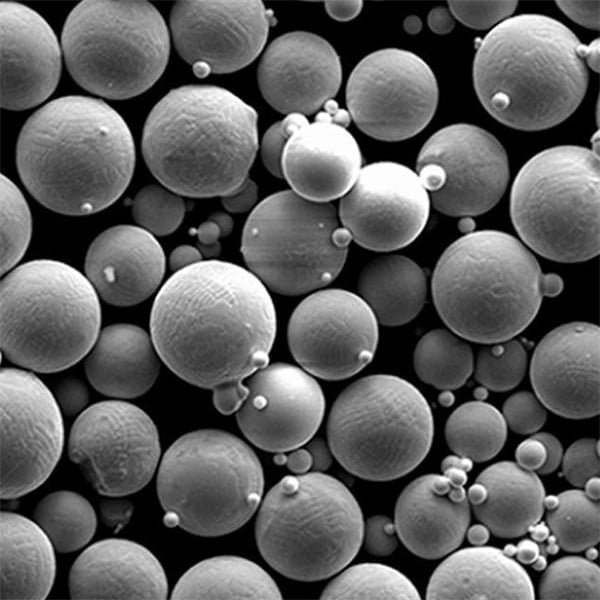
FAQs
| Frage | Antwort |
|---|---|
| Was sind die Vorteile der Verwendung von PREP-Pulvern im 3D-Druck? | PREP-Pulver bieten eine hervorragende Fließfähigkeit, was zu reibungslosen Druckprozessen führt. Ihre kugelförmige Form minimiert Hohlräume und gewährleistet gleichbleibende Materialeigenschaften im Endprodukt. Darüber hinaus verringert die hohe Reinheit der PREP-Pulver das Risiko von Fehlern und verbessert die mechanischen Eigenschaften der gedruckten Teile. |
| Wie schneidet PREP im Vergleich zu anderen Zerstäubungsmethoden für reaktive Metalle ab? | Die Inertgasumgebung von PREP ist besonders vorteilhaft für reaktive Metalle wie Titan und Tantal, da sie die Oxidation und Kontamination während des Prozesses minimiert. |
| Was sind einige der Sicherheitsaspekte der PREP? | PREP arbeitet mit hohen Temperaturen, geschmolzenem Metall und Plasmabrennern. Korrekte Sicherheitsprotokolle wie das Tragen von persönlicher Schutzausrüstung (PSA) und die Einhaltung von Betriebsverfahren sind entscheidend für die Sicherheit des Bedieners. Außerdem muss die abgedichtete Kammer gut gewartet werden, um Gaslecks und potenzielle Gefahren zu vermeiden. |
| Wie sehen die Zukunftsaussichten für die PREP-Technologie aus? | Da AM und andere fortschrittliche Fertigungstechniken an Bedeutung gewinnen, wird die Nachfrage nach Hochleistungsmetallpulvern voraussichtlich steigen. Die PREP ist gut positioniert, um bei diesem Wachstum eine Schlüsselrolle zu spielen. Die laufende Forschung konzentriert sich auf die Verbesserung der Produktionsraten, die Erweiterung der Materialkompatibilität und die Senkung der Kosten. Fortschritte in der Automatisierung und Prozesssteuerung werden voraussichtlich zu einer weiteren Rationalisierung der PREP-Verfahren führen. |
| Wo kann ich mehr über PREP erfahren? | Mehrere Quellen bieten ausführliche Informationen über die PREP-Technologie. Renommierte Fachzeitschriften, Branchenpublikationen und Websites führender Hersteller bieten detaillierte technische Beschreibungen, Anwendungsfallstudien und die neuesten Forschungsentwicklungen. Darüber hinaus sind Fachverbände und Konferenzen, die sich mit AM und Metallpulverproduktion beschäftigen, wertvolle Wissensquellen. |
Teilen auf
MET3DP Technology Co., LTD ist ein führender Anbieter von additiven Fertigungslösungen mit Hauptsitz in Qingdao, China. Unser Unternehmen ist spezialisiert auf 3D-Druckgeräte und Hochleistungsmetallpulver für industrielle Anwendungen.
Fragen Sie an, um den besten Preis und eine maßgeschneiderte Lösung für Ihr Unternehmen zu erhalten!
Verwandte Artikel

Hochleistungs-Düsenschaufelsegmente: Revolutionierung der Turbineneffizienz mit 3D-Metalldruck
Mehr lesen "Über Met3DP
Aktuelles Update
Unser Produkt
KONTAKT US
Haben Sie Fragen? Senden Sie uns jetzt eine Nachricht! Wir werden Ihre Anfrage mit einem ganzen Team nach Erhalt Ihrer Nachricht bearbeiten.
Holen Sie sich Metal3DP's
Produkt-Broschüre
Erhalten Sie die neuesten Produkte und Preislisten

Metallpulver für 3D-Druck und additive Fertigung
UNTERNEHMEN
PRODUKT
cONTACT INFO
- Qingdao Stadt, Shandong, China
- [email protected]
- [email protected]
- +86 19116340731






